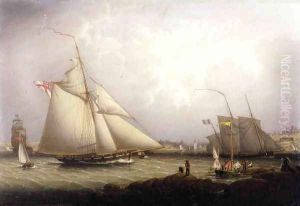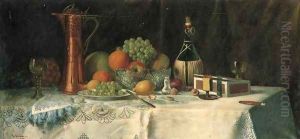Robert Schade Paintings
Robert Schade was a German-born American painter known for his portraits, landscapes, and genre scenes. He was born on February 25, 1861, in Barmen, Germany, which is now a part of Wuppertal. Schade demonstrated a talent for art from an early age, and his pursuit of an artistic career led him to study at the Royal Academy of Fine Arts in Munich, one of the most prestigious art schools in Germany at the time.
After completing his studies, Schade immigrated to the United States in the 1880s, seeking new opportunities and inspiration. He settled in the Midwest and became part of the vibrant art scene there. Schade was particularly active in Milwaukee, Wisconsin, where he worked and taught. He played an influential role in the local art community and helped to establish the Milwaukee Art Students League.
Throughout his career, Schade was recognized for his skillful technique and his ability to capture the character and personality of his subjects. His portraits were especially admired, and he painted many notable figures of his time. In addition to portraiture, Schade painted landscapes that often depicted the American Midwest, capturing its light and atmosphere with a naturalistic style.
Schade's work was exhibited widely, including at the Paris Salon and the National Academy of Design in New York. He was a member of various art organizations, including the Society of Western Artists. His art is characterized by a strong academic foundation, with an emphasis on realism and attention to detail.
Tragically, Robert Schade's life and career were cut short when he died on June 6, 1912, in Milwaukee, Wisconsin. Despite his relatively brief career, Schade left behind a legacy of artwork that continues to be appreciated for its contribution to American art at the turn of the 20th century. His works can be found in several collections and have been the subject of posthumous exhibitions, ensuring that his artistic achievements continue to be recognized and celebrated.

